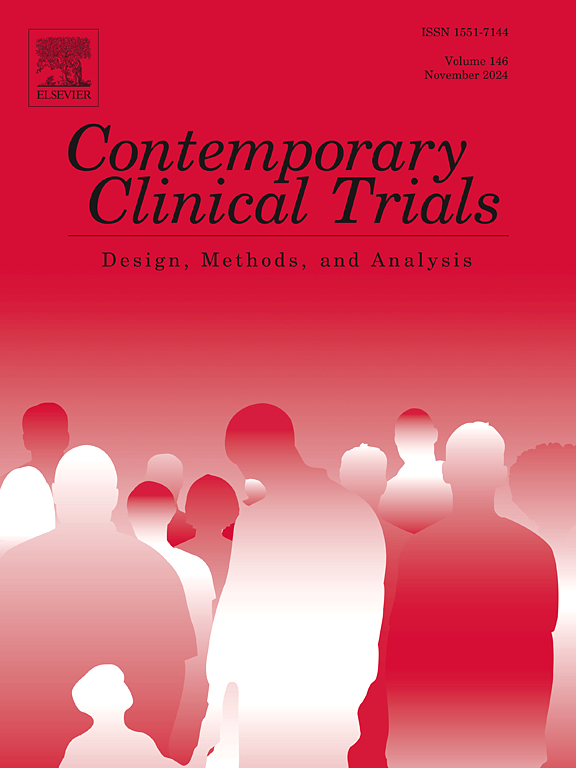Protocol for a multisite, parallel-group, randomized clinical trial comparing a brief tele-cognitive behavioral therapy intervention (BRIGHT) with attention control for the reduction of body image-related distress among head and neck cancer survivors
IF 2
3区 医学
Q3 MEDICINE, RESEARCH & EXPERIMENTAL
引用次数: 0
Abstract
One in four head and neck cancer (HNC) survivors experience clinically significant body image distress (BID), a devastating psychosocial morbidity that adversely affects quality of life. To date, effective interventions for these patients are lacking. BRIGHT (Building a Renewed ImaGe after Head and neck cancer Treatment), a brief cognitive behavioral treatment (CBT), has shown potential efficacy as a novel treatment paradigm for HNC survivors with BID. The primary objective of this randomized clinical trial (RCT) is to test the hypothesis that BRIGHT improves BID among HNC survivors relative to an Attention Control (AC) intervention. In this multisite RCT, N = 180 HNC survivors with BID will be randomized 1:1 to six weeks of BRIGHT or AC of dose and delivery-matched survivorship education. Outcomes are assessed at baseline and 2, 3, 6, and 9-months post-randomization. The primary endpoint is the IMAGE-HN (Inventory to Measure and Assess imaGe disturbancE–Head and Neck) score, a validated patient-reported outcome of HNC-related BID. Secondary endpoints include the HN Shame and Stigma Scale, the PROMIS SF v1.0-Depression 8a, Anxiety 8a, and Ability to Participate in Social Activities 8a, the Beck Scale for Suicidal Ideation, and the EORTC QLQ-HN35 Trouble with Social Eating and Trouble with Social Contact subscales. The trial will also evaluate whether the effect of BRIGHT on BID is mediated through improvements in automatic thinking and body image coping strategies. Findings from this multisite RCT will provide a rigorous test of the efficacy of BRIGHT as the first evidence-based strategy to manage BID among HNC survivors.
Trial registration ID
NCT05442957.
求助全文
约1分钟内获得全文
求助全文
来源期刊
CiteScore
3.70
自引率
4.50%
发文量
281
审稿时长
44 days
期刊介绍:
Contemporary Clinical Trials is an international peer reviewed journal that publishes manuscripts pertaining to all aspects of clinical trials, including, but not limited to, design, conduct, analysis, regulation and ethics. Manuscripts submitted should appeal to a readership drawn from disciplines including medicine, biostatistics, epidemiology, computer science, management science, behavioural science, pharmaceutical science, and bioethics. Full-length papers and short communications not exceeding 1,500 words, as well as systemic reviews of clinical trials and methodologies will be published. Perspectives/commentaries on current issues and the impact of clinical trials on the practice of medicine and health policy are also welcome.

 求助内容:
求助内容: 应助结果提醒方式:
应助结果提醒方式:


